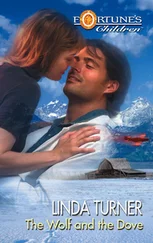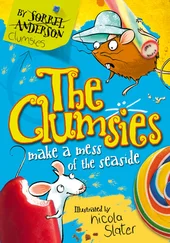Keep looking at it, though, and the tropical impression faded, darkened. Danny wasn’t sure why. Maybe it was the way the two front trunks topped out with the flared stumps of long-gone limbs as thick as the trunks themselves. Neither appeared shaped by hand, only weathered, yet each had the look of a skull that faced the sea, like the bones of a pair of malformed whales.
Who had first built the thing, and when—questions no one could answer. If their neighbor Felicia was to be believed, Neptune’s Throne was older than he was, and her as well. Felicia had lived atop the cliff for fifty years, and claimed the structure was there when she and her husband moved in. Claimed, as well, she’d seen a photo dated decades earlier, from the time of the Great Depression, and it was standing then, too. Meaning none of today’s throne could have been the original wood—it was too well maintained to have withstood over eighty years of weathering. But in the years he and Gail had been dividing their time between here and Santa Monica, he’d never seen anyone repair it… only use it.
When they passed by, Gail patted one of the gray-weathered anchor posts as if it were the leg of a friendly elephant. He lingered, fingertips tracing the little holes along the wood. He knew what they were now, but wasn’t pleased about that, as if there were a chance he could probe far enough inside to find a tangle of worms that had learned how to live outside the sea.
In their present direction, north, they were nearing their terminus, where a point of land fit for a lighthouse curved around from the right and speared out into the waves. At the base of the wall ran a stream fed by tributaries that trickled down the hillsides, then joined and cut ever-changing channels in the sand before emptying into the sea.
It was here she found it, a still-wet chunk of driftwood the size of a truncated log, mired in the sand of a delta that might not be there tomorrow morning, erased by the tide and recut somewhere else.
Gail knelt. She scraped off sand and picked away rags of seaweed. “You want to do the honors, my strong guy?”
Danny wrestled it free of the beach’s hold and stood it on end. It was lighter than it looked, would be lighter still after it dried. Regardless, he didn’t relish the thought of lugging it two hundred feet up slick wooden stairs.
“Wow,” she said after she’d had a longer look. “If I didn’t know better, and maybe I don’t, I’d say this was something that had already been carved.”
They traded places, Gail holding it up while he stepped back for a view. She was right. It had a suggestion of form—human, or maybe he was biased that way. Still, working with the contours and curves of what remained, he could discern legs, pressed together and thickening into hips. A waist and sloping shoulders. A head. It would be unrecognizable without a head.
“The figurehead off a ship’s prow, maybe?” He recalled yesterday’s yacht, being gnawed to slivers on the ocean floor. Maybe not that boat in particular; a stray chunk of someone else’s bad luck. The ocean was forever digesting the remains of bad luck and coughing up the pieces.
“A lot of figureheads were big-breasted women. Traditionally speaking.” Beside it, Gail went ramrod-straight and perked up her chest, comparing. “If I squint just right, I can make out a couple of boobs.” She looked him in the eye, squinty. “And if you say, ‘But what about the wood,’ I will murder you in your sleep.”
She had him call heads or tails, then they took their places at either end and began to shuffle the thing home.
Two days later she found another one washed up half a mile to the south, longer by a few inches, but shaped almost identically. Two half-rotted figureheads on the same beach at the same time? Not likely. By now he was leaning toward dismissing it as a case of pareidolia, the tendency to see ships in clouds, the man in the moon, and Jesus on a burnt tortilla. Or making a face out of two holes, a bump, and a line.
Even so, lugging them home felt like carrying corpses, complete with grave worms. The sodden outer wood sloughed and squished in his uncertain grip. Halfway up the cliff with the second one, his fingers broke through as if piercing a crust, and pulped an embedded shipworm as thick as a sausage. He nearly dropped the log and went down with it. The stairs were damp underfoot and slick with wet flora—treacherous for carrying this kind of load.
When Gail found the third one a few days later, he had no idea what to make of it. If pareidolia was simple pattern recognition, okay then, what sort of pattern was this? On the surface it seemed the same old relationship Gail had always had with the sea and the generosity of its tides. But it had never given her the same exact thing time after time. If it was going to do that, why not be really generous, and keep lobbing more lumps of ambergris at her.
She first left her finds outside on heavy racks to dry in the July sun, turning them every few hours like hot dogs on a grill. Then she moved them into her workshop, lined against one wall, standing in a row.
They’d turned pale now that they were dry, bleached by the elements and time. With the muck wiped off and the water-bloat gone, finer details emerged. The pieces all tapered and thickened the same way, with dual concavities that suggested eyes, and a nub that suggested a nose, and a crack against the grain for a mouth. They were just humanoid enough that Danny didn’t like turning his back on them, as if they were shells that would break open and release some worse form gestating inside.
“Gotta be a simple explanation,” Kimo told him on the boat while out on another freediving trip. “Maybe they’re something that fell off a cargo ship, some shipment of carvings that weren’t very good to begin with. Or there’s some asshole out here who lives on a boat, thinks he’s an artist, and dumps his mistakes overboard when nothing turns out the way he wants. Whatever they were, now that they’re washing up, they look that much worse.”
“Incompetent artists,” Danny said. “Really. That’s your explanation.”
“If you had a better one, you wouldn’t have asked me what I thought.”
Point taken. But the wobble in this theory was that nothing about any of these pieces appeared to have been carved. Danny had looked, and closely. No evidence of chisels, rasps, scrapers, drawknives. They showed no obvious signs of hand-tooling at all. Even the ends looked broken, not sawed. What was the likelihood that someone who couldn’t turn out a carving that looked more than vaguely human was, nevertheless, skilled enough to keep everything smooth, free of facets?
“Erosion. Wear,” Kimo said. “You ever see a jagged stone in a riverbed? Not me. Pick any rock, you don’t know how it looked when it went in. You’re just getting what’s left.”
And when Gail found another—number four, but who was counting?—Danny wasn’t even surprised. Well, yes, he was. Not by the find, but by the irritation he felt at the news. How many of these things did she need, anyway? Just because they washed up, did that obligate her to accept every single one, bring them all home?
It wasn’t like him to be resentful. But analyze it anyway. Things hadn’t merely come easily for Gail. They came effortlessly. The ocean gave and never ran out. All she had to do was show up and take possession.
He’d been lucky to be able to make a decent living doing something he loved. But it had never come easily. It had taken thousands of hours of wave time to hone his skills. It had taken near-drownings, lacerations from coral, jellyfish stings, reef rash, a staph infection, various sprains, two separate concussions when the board smacked him in the head… and that was before factoring in every competitor on the tours breathing down his neck, eager to take his ranking and sponsorships for themselves.
Читать дальше













